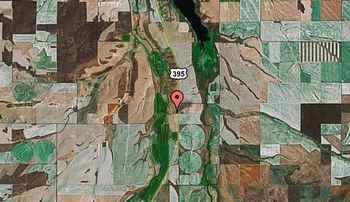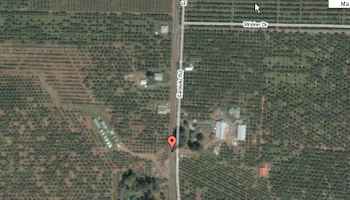Note: This is part of a series.
As I mentioned last week, I’ll be writing a series of posts about the struggle over property rights that is perhaps the single biggest environmental controversy in the Northwest. I was planning to build on last week’s question when I was sidetracked by every researcher’s best friend and worst enemy: data!
Data, specifically, from Oregon, where property owners are currently making claims under Measure 37, a prototype pay-or-waive law that forces governments to either waive land use regulations or else shell out tax dollars to property owners for the losses they claim. Voters in Washington may soon face Initiative 933, a very similar proposal. (And Idaho and Montana voters may see something similar too.)
How much would I-933 cost Washington? That is, how much would taxpayers be forced to pony up to enforce land-use regulations under a pay-or-waive scheme? The best way to answer that question may be to take a look at what’s happened in Oregon. What kind of losses are land owners claiming in Oregon under Measure 37?
Apparently, the sky’s the limit. According to Oregon’s handy registry of Measure 37 claims, nearly 1,400 claims have been filed, for a total value of nearly $3.3 billion. The average claim is $2.3 million. (This business of “losses” is a tricky one as it requires assessing not just what the property would sell for, but what the economic value of activity on the property would be if it were not regulated.)
One claim in particular leapt out at me: the claim of a Pendleton-area landowner for $284 million, by far the most expensive claim under Measure 37 so far. (For comparison, Seattle’s brand new Qwest field, home of the Seahawks, cost $360 million to build.) Just what exactly has this Pendleton landowner been prevented from doing that’s worth $284 million?
What could it be that she’s planning to do—currently outlawed—that could bring in that kind of dough? The registry doesn’t list the size of the property or its current use, so it’s hard to judge. But it does list an address, so I used Google Maps to find a satellite image of the place. Turns out, the place is arid land well outside Pendleton proper, closer to the little town of Pilot Rock. Irrigated farming appears to be the primary land use in the region, as evidenced by the green circles in the dusty landscape.
$284 million, huh?
Oregon’s state agencies are too strapped to investigate the claim, issue an assessment, or try to negotiate. Instead, they just waive land-use regulations and the Pendleton-area landowner can do pretty much anything she pleases now.
She’s not the only one. The second most expensive claim—for more than $64 million—comes from a fellow outside of Hood River. Employing Google Maps once again, it’s easy to find out that he is an orchard owner, though one can’t tell how extensive his property is. But what are laws preventing him from doing that could be worth $64 million? I’m guessing it’s not agriculture.
I checked with the Northwest Multiple Listing Service to get some idea of property values in the Hood River area. Turns out there are a total of 79 properties for sale in his zip code, 97031, and all of them together don’t add up to anywhere near $64 million. Not when you add in the million-dollar-plus luxury homes with views of the river. Not when you add in the farmland. And not even when you add in the little ramblers and rowhouses in town. Not even close.
He is very likely a land speculator, looking to subdivide his orchards and sell them off, perhaps as luxury homes. He’s in a rural area, but still within reasonable proximity to both the town of Hood River and the Columbia River. It’s a lovely area and doubtless he could make some money from plowing his orchards into asphalt, but $64 million doesn’t seem likely.
But it doesn’t really matter—he could have picked any old number out of a hat—because the value of the claim is almost irrelevant. Agencies don’t have the resources to contest Measure 37 claims and not a single government agency has. And Oregon taxpayers probably wouldn’t look too kindly on spending $64 million to keep him in the farming business instead of the land speculator business. So the only option is to suspend land use regulations for him and wait for him to turn his fruit trees into vacation houses or strip malls or maybe even a strip mine. There’s no way for the community to know what he’ll do and no way for Hood River neighbors to have any say at all in the matter.
Okay, I admit it: I cherry-picked two extreme cases. But I think the extreme cases ought to matter to Washington voters deciding on I-933. Why? Because there is effectively no way to contest the value of the claim, developers can make wildly outrageous claims.
It sounds a bit absurd, but in a sense it doesn’t really matter whether the claim is for $200 or $200 million. Cash-strapped governments are in no position to conduct independent assessments, so they must take property owners at their word. In Washington, I-933 may actually heighten the abusrdity because the initiative specifically does not allow agencies to charge even a nominal filing fee to cover the costs of processing the claim. And if the agency tries to negotiate or conduct an independent assessment of the claim, taxpayers will be required to pay the full cost. What’s more, taxpayers are also on the hook for attorney’s fees if the property owner wants to get a lawyer.
In Oregon, that has invariably meant waiving regulations, giving rise to a policy environment that is, for all intents and purposes, free of policy. Without any practical way to assess the claim’s merit, I-933 will become tantamount to waiving land-use regulations every time someone makes a claim.
Should Washington communities have any say at all in what property owners can do on their land? I suppose we could call that the $284 million dollar question.











WA taxpayer
Most of those claims will be waived and not paid because of the financial burden on local governments…that said, taxpayers in Oregon will spend $344 million just to process these claims, according to the Sec of State/State Treasurer’s Financial Impact Statement.So it’s really the $344 million dollar question for Oregon taxpayers.They can keep it down there.
Dan
Much needed investigation, Eric. Good work. Keep it up. I’m sure you’ll get many hits on this if the word gets out (I’ll certainly spread the word).In WA, one can go to the Assessor-Treasurer site of the county and see property data. I don’t have the time to go to OR and do the same. Another key is how close infrastructure is to these claims. That is: if there’s no sewer pipe nearby, you can’t develop, so your claim is booooo-gus. I suspect that land around Pendleton there won’t support whatever claim that is, either. But another point. The secondary point of M37 (realized) was to stop land-use planning in OR.DS
Steven B.
DS–No, the primary and only point of M37 was to bring “fairness” to those land use regulations that have nothing to do with protecting health and safety and everything to do with taking private property without paying for it by using the police power of zoning. It’s about operating a planning program that is funded by the public for which it is designed to serve, not by taking away private property from the rural landowners. And that is what is really going on here—the elimination of private property.–Steven B.
Alan Durning
Eric,Very interesting. I could use some more explanation of why governments aren’t/won’t contest any M37 claims in Oregon. Ditto for WA, ID, MT. If some claims are patently absurd, won’t local government object? How does the process work?
Rita Swyers
Oregon established policy that forced land use laws “for the public good”. Compensation for property taken or devalued was in that law but it never happened. Measure 37 is giving the bill back to the governments with the option to waive. Restrictions on property have slowed the economy. 37 also protects the freedoms promised in the US and OR constitutions. I am amazed at how government and journalists believe they have special powers to plan for citizens. WA will love 1-933 and they will prosper. The non-farming community loves the farms and wants them to enjoy while they continue to pass legislation making it almost impossible to farm.
Dan
Oh, look! You guys’ first I-933 spam! Alan,M37 requires, IIRC and my understanding from talking to folks at conferences, that these claims take priority to process and are more difficult than typical development proposals. As all government, esp. small locals, are already cash-strapped, there is no way for a staffer to run the numbers (supposing they have the expertise).Simply, the person can then develop their land, regardless of the local plan because they can’t pay compensation; everyone knows this (that the default is ‘go ahead and develop’). There goes all that money spent in the past. Now, whether the Pendleton property will actually be developed into, say, a shopping mall is problematic, as there is no infrastructure there, and who in their right mind would do that? McMansions on a golf course, well, who has water rights? I’d like to see how these people are going to make this come off. Certainly we will see more homes outside the UGB, and more traffic. DS
Eric de Place
Thanks, Dan—As usual, you’re right.Alan, just to elaborate on Dan’s point, I suppose if a claim is patently absurd it’s (theoretically) possible that an agency could try to reject it. Oregon has never done this—not even in the outrageous Pendleton case I cited—because of the considerable expense involved. (My next post will deal with the sizeable administrative costs—costs to taxpayers—of dealing with pay-or-waive claims.) It’s unlikely that agencies in Washington would ever object to a claim under 933 in part because 933 makes taxpayers pay for everything—assessments, filing, negotiation, even lawyers for the property owner making the claim. Rita- Sorry, but neither the US nor the Oregon (nor Washington) constitution promises that land-use won’t be regulated. Zoning laws clearly pass constitutional muster.Steven B- It matters less what the “point” of M-37 is (or is supposed to be) than what is actually does. No one in the OR or WA debates wants to eliminate private property—that’s just stupid. But plenty of people want protection—for themselves, their communities, their kids—from “anything-goes” development.
Rob
Eric: Good research on what is happening here in Oregon with Measure 37 claims!Alan: You asked for a better understanding of how the Measure 37 process works and why local governments don’t reject patently absurd claims.The short answer is that most claims are being filed for properties in rural areas overseen by county commissioners, which tend to be more conservative, to support Measure 37, and to be skeptical of the benefits of land use planning. Thus some county commissioners (for example, in Yamhill County) are inclined to grant waivers for most claims filed, regardless of the merits.The longer answer is that Measure 37 is vaguely written and open to different interpretations. In particular, Measure 37 Section 2 provides:”Just compensation shall be equal to the reduction in the fair market value of the affected property interest resulting from enactment or enforcement of the land use regulation as of the date the owner makes written demand for compensation under this act.”Most claimants and jurisdictions assume this language means that the “reduction in the fair market value” is equal to the difference between what a real estate appraiser says the property would be worth if the regulation were waived on that and only that property and the current fair market value of the property with the regulation in force.The problem with this approach is that it fails to determine if there even has been a reduction in value resulting from enactment or enforcement of the land use regulation. The reason is that the concept of fair market value assumes that all applicable regulations are in effect. If a regulation is in effect today, was in effect last year, and the years before that, then there has been no change in the regulation hence no way in which the regulation could result in a reduction in the fair market value of the property.In order to determine if there has actually been a reduction in value resulting from enactment or enforcement of the land use regulation, one must go back to the time when the regulation was first enacted and see if the value of the property declined after the regulation took effect. As most of the properties for which claims are being filed were rural lands far from urban areas at the time the land use regulations were adopted and as their highest and best uses at the time were typically for farming or forestry, it is likely that the land use regulations had little or no effect on the fair market value of such properties.In contrast, the approach being used by most claimants and jurisdictions doesn’t actually determine any reduction in value but rather the hypothetical windfall that would occur if the property owner was granted a waiver to a regulation that continues to apply to most nearby properties, i.e., a kind of monopoly to develop.It is important to realize that the regulation actually creates the hypothetical windfall: If the regulation were to be repealed altogether, there would be a surplus of developable land and it is unlikely that the particular property belonging to the Measure 37 claimant would command a premium over all the surrounding properties. With a large supply of developable land, it is likely that most rural lands would be worth little more than what they are with land use regulations in effect.In short, people filing Measure 37 claims are wanting to have their cake and eat it to by being free of land use regulations they say harm them while at the same time benefiting from those regulations continuing to apply to their neighbors and hence givng them a kind of monopoly to develop.If some jurisdictions were so motivated, they could assert the interpretation of Measure 37 that measured the actual reduction in value rather than the hypothetical windfall. They could also opt to pay modest claims or to offer partial waivers equal in value to the actual reduction. For example, if the value of an 80-acre farm dropped $100,000 (measured in today’s dollars), a jurisdiction might opt to grant a partial waiver worth $100,000 to develop a single house—but not a full waiver worth $8 million to develop a subdivision of 80 houses. Such an approach is closer to the intentions of Oregon voters, is fair to both claimants and their neighbors, and far less costly than the current approach.Unfortunately, because Measure 37 doesn’t assert this reasonable interpretation and because jurisdictions are liable for legal fees, most are disinclined to challenge the interpretation far more generous to claimants.Rob Zako1000 Friends of Oregon
Dan
In short, people filing Measure 37 claims are wanting to have their cake and eat it too by being free of land use regulations they say harm them while at the same time benefiting from those regulations continuing to apply to their neighbors and hence givng them a kind of monopoly to develop. Bingoooo. Planning chaos.Excellent comment. DS